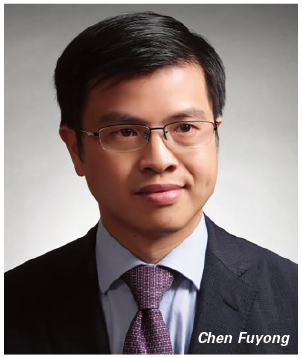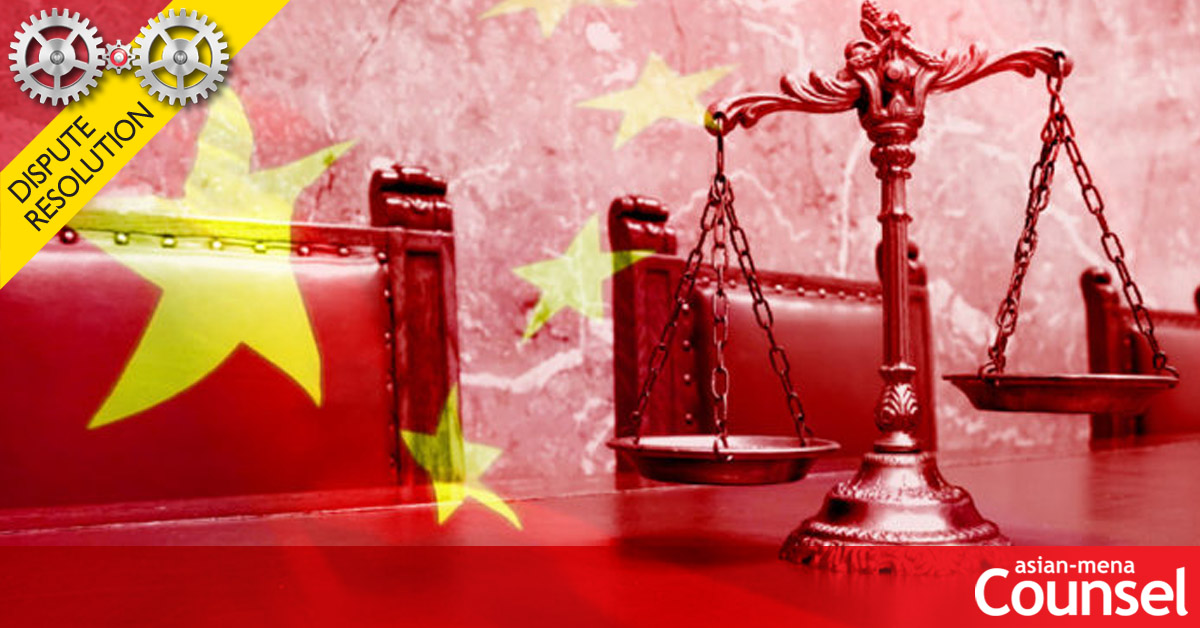Published in Asian-mena Counsel: Dispute Resolution Special Report 2020

By Dr Fuyong Chen, Beijing Arbitration Commission/Beijing International Arbitration Centre
ARBITRATION CENTRE UPDATE
Continuous improvement is empowering Chinese arbitration practice to grow rapidly.
In China, amateurs may regard a city-named arbitration institution as the one only handling local arbitration cases. It is not, as a matter of fact. Among the main international arbitration institutions, city-named is more often the case worldwide since the impartiality and professional capability, rather than nationality, plays the upmost role in gaining trust from global arbitration users. This article takes Beijing Arbitration Commission/Beijing International Arbitration Centre (BAC/BIAC), as the leading Chinese arbitration institution, as example, and tries to debrief the developments of its international cases in the past five years and to demonstrate the landscape changes of international arbitration practice in China, which would be valuable for arbitration users’ decision-making process.
Caseload overview
With the development and shift of global trade and investment, the market share of international arbitration in China is expanding.
In terms of the caseload, BAC/BIAC’s international cases have experienced an increase from 52 in 2015 to 163 in 2019, with an average annual growth rate of 35.95 percent. In terms of the average value of a single dispute, BAC/BIAC’s international cases have also had an increase from more than Rmb21 million (US$3m) in 2015 to over Rmb42 million in 2019, with an average annual growth rate of 54.38 percent. In 2019, the largest international case reaches Rmb1.46 billion in its value, and 12 international cases values more than Rmb100 million respectively.
By nationality and region, BAC/BIAC’s international cases have involved parties from all over the world in the past five years. Excluding Hong Kong, Macao and Taiwan of China, the number of parties from the Americas (including North America, Central and South America) is 51; the number of parties from Asia is 47; the number of parties from Europe is 39; the number of parties from Africa is nine; and the number of parties from Oceania is six. A total of 43 percent of the non-Chinese parties have applied arbitration at BAC/BIAC, and nearly 57 percent of the non-Chinese parties have participated in the arbitration administered by BAC/BIAC as respondents. Furthermore, among the non-Chinese parties, 35 are from the US, 26 are from the UK and 12 are from Canada, making them the top three of BAC/BIAC’s non-Chinese users.
In terms of the type of cases in the past five years, BAC/BIAC has accepted 174 pan-financial cases (131of equity investment, 43 of lending and guarantee), 104 international trade cases (68 of sales and 36 of services), 64 international engineering and real estate (40 of construction and 24 of real estate), 31 intellectual property and technology cases, and 76 cases of other types. Among which, the growth rate of equity investment cases, intellectual property and technology cases are comparatively fast in the past five years.

Handling of cases
By introducing and innovating international practice in institutional arbitration rules, the arbitrators and parties who take part in Chinese international arbitration practice are well equipped with more procedural tools and capacities.
Firstly, in terms of the arbitration language, since the 2015 amendment repeals of the default language provision, which introduced Chinese as the arbitration language if no agreement on arbitration language is specified, more arbitration tribunals and the parties concerned opted for English as the arbitration language. Such cases are being handled more smoothly as more arbitrators (including non-Chinese ones) who are capable of handling international cases preside over BAC/BIAC’s international arbitration cases.
Secondly, in terms of the applicable laws and applicable arbitration rules, a variety of situations have been witnessed during the past five years, where the applicable laws involve Hong Kong law, US law of the state of New York, Korean law, Uzbekistan law, Kyrgyzstan law and the UN Convention on Contracts for the International Sale of Goods, and the applicable arbitration rules involve ICC Arbitration Rules and the UNCITRAL Arbitration Rules. In a number of cases, parties from in and out of China even reached amendment on their arbitration agreement that stipulate another well-known international arbitration institution, and replace BAC/BIAC as the eligible arbitration institution for their dispute resolution.
Finally, since the BAC/BIAC’s 2015 Arbitration Rules introduced a series of cutting-edge international practices, the joinder and the consolidation of arbitration have already been a frequent practice in BAC/BIAC’s international cases. Also, it is worth noting that after the first emergency arbitrator case in mainland China was administered by BAC/BIAC and the interim measures of that case were enforced in 2017, BAC/BIAC has begun to encourage and support more tribunals and the parties to apply for emergency arbitrator proceedings and seek enforcement of interim measures in countries and regions along the Belt and Road.

Efficiency and quality
The traditional wisdom in Chinese institutional practice allows a quicker learning curve for more tribunals and parties to become competent conducting arbitration in different but efficient ways.
In terms of case management approaches, BAC/BIAC’s international cases have widely adopted the procedural orders and terms of reference, which are believed to be a more effective way of preparing the arbitration. In 2019, furthermore, one of BAC/BIAC’s international cases used Redfern Schedules in discovery. In some other occasions, tribunals, parties and witnesses have agreed to online hearings or electronic service, and BAC/BIAC encourages and supports all choices.
In terms of the duration of case management, all aforementioned innovation and measures contribute to the high efficiency of BAC/BIAC’s international cases. Taking 2019’s statistics as an example, the time limit for BAC/BIAC’s arbitration that applies to ordinary international commercial procedures is six months, and the time limit for BAC/BIAC’s arbitration that applies to expedited international commercial procedures is 90 days, while the actual average durations for BAC/BIAC’s 2019 international cases was 157 days for the former type of procedures and 63 days for the latter type. (Note: the time limit counts from the composition of tribunal to the rendering of award.) The statistics could be very persuasive to the users who are sensitive to the efficiency.
Yet, no awards rendered in BAC/BIAC’s international cases have been set aside or non-enforced. The enforcement and recognition of BAC/BIAC’s awards, indeed, were witnessed in the US and many other countries and regions.
The platform
In 2019, the BAC/BIAC moved forward with new amendment of its commercial arbitration rules and a set of investment arbitration rules. The former has made a bold breakthrough in the fee structure of Chinese commercial arbitration, while the latter has been an innovative proposal to alleviate the existing concerns about investment arbitration.
With these efforts, the proportion of panel listing arbitrators who are actually sitting in BAC/BIAC’s international cases has increased significantly in the past five years. Among which, 526 non-Chinese arbitrators have been appointed or nominated in BAC/BIAC’s cases.
As Shakespeare wrote: “What’s past is prologue.” The continuous improvement of China’s business environment and the further opening-up empower arbitration practice in China to grow rapidly. In the meantime, the international arbitration community in China may embrace a better future while profound changes are taking place in the global politics and economies.
_________________________________________________
BAC/BIAC’s senior manager Terence Xu also contributed to the article
_________________________________________________

W: www.bjac.org.cn
E: bjac@bjac.org.cn
![]() Click Here to read the full issue of Asian-mena Counsel: Dispute Resolution Special Report 2020.
Click Here to read the full issue of Asian-mena Counsel: Dispute Resolution Special Report 2020.


